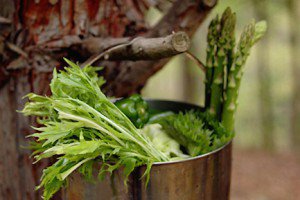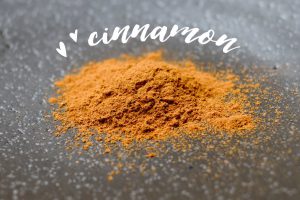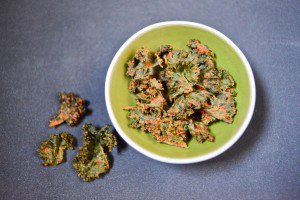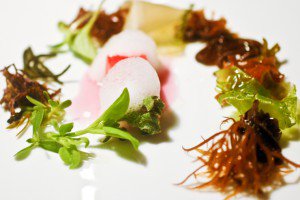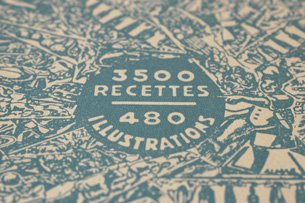
I have written about my grandmother on a few occasions in the past. She is my father’s mother and she lives not too far from me, which allows me to visit and bask in the glow of her tenderness and her general wisdom on all things life.
In the past few years, my ever-growing passion for food and cooking have definitely brought us closer: as a devoted cook herself, I can see how happy she is that a grandchild of hers would share that interest and be delighted to converse endlessly about tips and recipes and tricks of the trade.
Since she doesn’t speak English and has never used a computer — much less been on the Internet — it is somewhat difficult to explain what C&Z is, but I try (clippings help), she gets the general idea, and she’s very eager to help. Most recently, she decided to entrust me with one of her cooking bibles called L’Art Culinaire Moderne written by Henri-Paul Pellaprat, which she acquired in late 1946 as her handwritten ex-libris attests.
I am fascinated by vintage cookbooks and this one is no exception. With more than 700 pages, 3,500 recipes and 270 pages of illustrations, the author’s ambition is to establish the standards of la bonne table française et étrangère — French and foreign cuisine — for the use of the home cook (needless to say, this is a woman we’re talking about here).
The book covers an impressive array of recipes for soups, sauces, hors d’oeuvre, egg dishes, fish, red meat, poultry, foie gras, game, pâtés, vegetables, cheese, fruits, baked goods, candy, entremets, ice-creams and preserves. Although the vast majority of recipes are very French, Pellaprat ventures a tentative toe into the exotic territories of foreign cuisines, devoting an entire section to what he calls “le couscous des Arabes” and giving recipes for Russian borchtch, Brazilian feijoada or American cocktails. He also throws in a dictionary of cooking terms, priceless entertaining advice, menus for different occasions and diets for various ailments.
The illustrated techniques and dishes are beautiful, and they’re a wonderful testament to the taste for intricate, over-the-top or just plain weird presentations that were the norm back then.
Like many cookbooks of that time, the recipes are mostly general directions with few precise measurements, assuming that the reader has already been taught the basics by her mother or at school. What I love to do is just pick a page at random (Zéphirs de volaille à la crème, Fricandeau à l’oseille, Pommes de terre Mirette) and delight in the old-fashioned names of the dishes (Maquereaux grillés Maître d’Hôtel, Tomates à la Hussarde, Melon en surprise), before poring over the recipes, picking up ideas here and there, or finally learning what exactly is that classic sauce or dish (Sauce gribiche, Barbue à la Dugléré, Mousse de volaille à la Mornay) I’ve sometimes read about.
And now I am terribly tempted to throw a dinner party for which I’d cook exclusively from this book. Of course, girls would have to wear long narrow skirts, shoulder-padded rayon shirts and pompadour hairdos, while guys would sport their grandfather’s best hand-painted tie, and we would listen to classics from the swinging 40’s…






